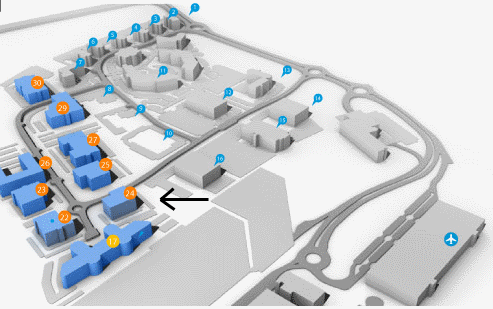Current Size: 100%

- Publications
- Cancer atlases
- 22. Conclusions and recommendations
NCR books
- Cancer Atlas
- Acknowledgements
- Foreword
- Summary
- 1. Introduction
- 2. Methods
- 3. Non-melanoma skin cancer
- 4. Breast cancer
- 5. Colorectal cancer
- 6. Lung cancer
- 7. Prostate cancer
- 8. Non-Hodgkin's lymphoma
- 9. Stomach cancer
- 10. Melanoma of the skin
- 11. Bladder cancer
- 12. Head and neck cancer
- 13. Leukaemia
- 14. Pancreatic cancer
- 15. Kidney cancer
- 16. Oesophageal cancer
- 17. Ovarian cancer
- 18. Brain and other central nervous system cancer
- 19. Cancer of the corpus uteri
- 20. Cancer of cervix uteri
- 21. Discussion
- 22. Conclusions and recommendations
- Appendix 1: Relative risks (with 95% confidence intervals) by area characteristic, cancer site and sex
- Appendix 2: Electoral division tables
- Appendix 3: Summary statistics for each cancer site
- Appendix 4: Regions referred to in the atlas
- References
- Index of figures, maps and tables
22. Conclusions and recommendations
Conclusions
This atlas shows major variations, sometimes more than two-fold, in the risk of many cancers across the island. For many cancers, we found a strong relationship between socio-economic status and cancer risk, sometimes positive, sometimes negative. These socio-economic relationships were more consistent than the broad geographical patterns identified by mapping. Few of the geographical patterns could be satisfactorily explained by the available data on risk factors, although we did see some correlations between smoking prevalence and smoking-related cancers.
The socio-demographic measures of risk used here were based on recent data, but the relevant period of exposure to risk factors would have been 15, 20 or more years in the past. The relevance of recent census data to the factors important in the initiation of the cancers described here could be debated. However, preparatory work for this atlas indicated to us that patterns of unemployment were quite stable over time and that it was reasonable to use recent census data as an indicator of past patterns.
In the absence of individual-level risk factor data, we have used area-based measures drawn from recent censuses. However, differences between the two countries in the definition of many of the census variables usually used to indicate socio-economic status made the development of common measures of deprivation difficult. The degree of correlation between individual risk status and area measures is also debatable and has been explored by us in a previous publication (Carsin et al., 2009). Is it reasonable to take area-based measures as proxies for individual health, or should they be considered only in the context of area-based factors such as housing, transport, shops (Layte et al., 2011) and access to medical services? To answer these questions, more data at individual level is needed, in Ireland and internationally. Despite this, the analyses suggest that area-based measures of deprivation, which are likely to coincide with both individual deprivation and the quality and availability of local services, are important markers of cancer risk in Ireland.
In most cases, increasing population density and a high proportion of elderly living alone were associated with increased cancer risk, irrespective of deprivation. In the absence of direct evidence of causation, we can only speculate as to the origins of these gradients. Action is needed urgently to determine the causes of excess risk, much of which is likely to be modifiable, but the relationship of these area measures to individual risk is not straightforward. Differences in cancer risk between populations may be related to the prevalence of risk factors and their interactions; to awareness of cancer symptoms and help-seeking behaviour; and to access to, and uptake of, screening and diagnostic services. The interaction of these factors in determining the incidence of different cancers is complex and variable, as shown by the widely varying geographical patterns we report here.
With regard to the geographical variation in cancer risk shown by mapping, much of this was not explicable solely in terms of the socio-economic and demographic variables examined in the regression analysis. We were struck by the relative paucity of comparable published information on cancer risk factors, at national, individual, or small area level in both countries. A restrictive approach to data sharing (not always justified by either legislation or data protection guidelines) has made linkage of cancer registry data with occupational and census data almost impossible in both jurisdictions. Other risk factor data, irrespective of our ability to link it at either individual or small area level, is sparse and, in our experience, also restricted due to fears about data protection. Sources of existing data are fragmented and often neither available nor published.
The smoothing model used to generate the maps is a powerful tool for estimating the relative risks of cancer in small areas and, following extensive testing, we are satisfied that it gives a good representation of the true underlying risks, based on the data and the underlying assumptions. Geographical patterns are revealed which are not visible from the raw incidence data. The model could be further refined by the inclusion of risk factors (e.g. deprivation, smoking status, obesity levels), if this data were to become available at ED/ward level. However, the model makes the assumption that the risk of cancer does not vary much between neighbouring small areas. Also, the amount of smoothing is determined by the number of cases diagnosed—the rarer the cancer type, the smoother the map. Further development of the mapping methodology, including exploration of the effects of including additional factors in the models and of using time periods of different lengths, would be valuable.
One value of an all-Ireland atlas is the ability to compare two populations living in close proximity with a presumed similarity in lifestyle and genes, but with different health services. This may serve as a “natural experiment” to separate the effects of health service organisation and its contribution to cancer risk, from individual factors such as genetics and lifestyle. However, it was not our primary aim to look at NI/RoI differences. These have been explored in a series of joint publications (Walsh et al., 2001; Campo et al., 2004; Donnelly et al., 2009). The limited data available did not indicate any major differences in cancer risk factors between NI and RoI and there were few systematic differences in cancer risk. For a number of cancers we observed north-east/south-west gradients which might have been related to NI/RoI differences; however there was no evidence of a sharp gradient in the border areas, which would have been expected if this were the case. Some clear differences in relative risk existed between NI and RoI. Some of these were clearly attributable to health service utilisation—longer established breast screening in NI; more prostate-specific antigen testing in RoI (Drummond et al., 2009). However, many cancers had a higher risk in RoI, which persisted when adjusted for socio-demographic factors. Differences in registration practices, although unlikely, cannot be completely ruled out, but it is possible that the more demand-led health services in RoI (Galway et al., 2007) have led to more case-finding (e.g. for skin cancer, kidney cancer, chronic lymphocytic leukaemia) and an apparently higher overall cancer risk.
Descriptive analyses cannot tell us about causation, but can generate hypotheses. To explore these hypotheses we need much better information on risk and the determinants of risk. We need analytical studies, cohort and case-control studies, beginning with cancers which are both common and show the widest geographical variation in risk—for instance melanoma and stomach cancer. These would be most effective as part of multi-national collaborations. Although the reasons for socio-economic variation in cancer risk have been well characterised (Faggiano et al., 1997) we need to understand the specifically Irish aspects; for instance, what characterises areas with a higher proportion of elderly living alone? With cancer numbers predicted to increase greatly in Ireland in the coming decades, mainly as a result of population ageing, we need to focus more on the causes of cancer, and its prevention. We hope that this atlas will serve as a stimulus and raw material for detailed studies which will explore and answer some of the questions it poses.
Recommendations
Research
- Areas with unexplained higher than average risk should be studied in detail. Some findings here are of major public health importance:
- The largely unexplained geographical patterns for some of the more common cancers: colorectal, melanoma and stomach cancer;
- The role of H pylori infection, an easily diagnosed and treatable risk factor, in the high rates of stomach cancer in the east and north-west.
- A comprehensive programme of research into already known determinants of cancer risk in Ireland is needed to inform cancer control. Information on common modifiable risk factors such as smoking, diet, exercise, alcohol use, medication use, reproductive history and infection, their population prevalence and variation by age, sex, socio-economic status, area of residence, and over time, is essential for an understanding of the cancer burden.
- The aetiology of cancers where risk factors are uncertain requires further investigation, ideally through international collaborations.
- Patterns of healthcare access and utilisation in Ireland, north and south, and how these affect cancer risk, need to be understood.
Risk reduction
- Research is needed into levels of awareness and knowledge of cancer risk factors among the population in Ireland, and how these vary by age, sex, socio-economic status and geographical area.
- Action should be taken to reduce the prevalence of important modifiable risk factors such as tobacco, alcohol, overweight and UV exposure
- Campaigns and initiatives to help raise awareness of health lifestyle behaviours (e.g. physical activity) among the public should emphasise the links between lifestyle and cancer.
Data and linkage
- Collection of information on determinants of health (including socio-economic data collected as part of the census) in the Irish population should be consistent, integrated, systematic and regular.
- Efforts should be made to increase the compatibility of health, risk factor, census and health service utilisation data between NI and RoI.
- Both countries should run regular, comparable, population-based health surveys and make the data available for research. Linkage of this data with other routinely collected data should not be unnecessarily restricted.
- Public health data which is collected with the support of public funding should be made readily available to researchers, with appropriate safeguards.
- Custodians of data relevant to health should be encouraged to clarify the potential for data linkage and the use of this data for the public good should be encouraged by Government policy.
Building 6800
Cork Airport Business Park
Kinsale Road, Cork T12 CDF7
Email Contact us here
Tel: +353 (0) 21 4318014
Fax: +353 (0) 21 4318016




